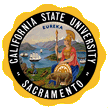

Soc 166 The
Family
California State
University, Sacramento

Unit 2: The Family Institution
Unit 4: Parent-Child Relationship
Unit 6: Family Conflict and Dissolution
|
| ||
|
Unit Goals and Objectives
|
| |
|
Lecture Notes |
| |
|
Assigned Readings |
Chapter 1 Issues and Changes |
First week |
|
Activities |
|
|
|
Exercises |
|
|
|
Discussion Groups (COW) |
Discussion Topics:
|
|
|
Kinship and social organization Family
values
|
| |
|
|
Partha R. Burt and Barbara E. Cohen, "Differences Among Homeless Single Women, Women with Children, and Single Men," Social Problems, 1989. |
|
|
Assessment |
|
|
|
| ||
DEPARTMENT / CSUS
Page updated: February 7, 2000